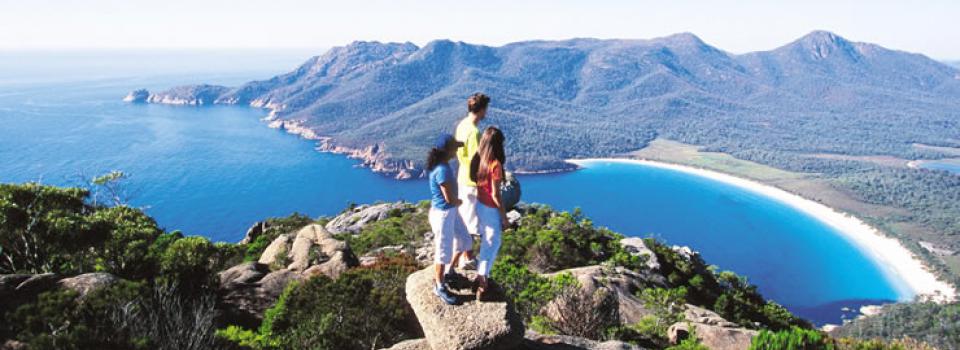Sustainable tourism in protected areas can be critical for their survival, says new IUCN report
Sydney, Australia, 14 November 2014 (IUCN) – Increasing the number of visitors to protected areas can be an effective tool for conservation and community development, provided well-functioning management systems are in place, according to a new report unveiled today at the IUCN World Parks Congress taking place in Sydney, Australia.
Highlighting a global collection of case studies from Machu Picchu in Peru to the Damaraland Camp in Namibia, the IUCN report, Tourism and Visitor Management in Protected Areas: Guidelines for Sustainability, includes contributions from more than 50 experts from 23 countries and territories, and examples from over 45 countries around the world. “Unlike other industries and human-driven activities, tourism in protected areas can be a strong positive force – increasing a sense of stewardship and revenues that are vital for the long-term protection of these important conservation areas,” said Dr. Yu-Fai Leung, the chief editor of the report and member of the IUCN WCPA Tourism and Protected Areas Specialist Group. “By contrast, reduced visitor numbers to protected areas can signal a lack of political interest or public support. The guidelines provided in this report are intended to strengthen current visitor management systems, including measures on how best to protect these key natural and cultural assets.”
International tourism is a trillion-dollar business, accounting for up to 9% of global GDP. The World Tourism Organization estimates that tourism is expected to continue to grow by 3.3% annually through 2030, generating one in twelve jobs globally. Protected areas, including National Parks and World Heritage Sites, are consistently the primary attraction for tourists interested in exploring natural areas and its wildlife across the world.
Governments, protected area agencies, tour operators, retailers and members of the local community can all benefit from tourism revenues and in some cases tourism enterprises directly support the protection or rehabilitation of key habitat areas.
For example, payments made by Wilderness Safaris – a private sector ecotourism company – for annual concession fees for ecotourism camps in Africa in 2014 totalled over USD 4.4 million, a substantial contribution to financing protected areas through tourism.
In contrast, the report finds that where visits to protected areas have dropped, such as in Canada, Japan and the United States, the parks have suffered from reduced political support and funding. For example, between 1994 and 2012, there was a 28.7% decrease in the number of visitors to national parks in Canada, which may have contributed to the government’s 2012 decision to cut budget and staff to national parks.
The report recognizes that protected area managers are grappling with a number of challenges, including climate change, illegal wildlife trade, inadequate infrastructure and competing interests for natural resources. However, with proper management systems in place, an increase in visitors can generate much needed revenues from entrance fees, guided tours, accommodation and concessions, which in turn can be invested in conservation activities.
The report highlights the need to identify and evaluate the true costs and impacts of tourism in protected areas, in order to have a clear understanding of the opportunities and challenges related to the development of tourism in these areas.
“With international travel expected to rise, protected areas managers need to mitigate any negative impacts as a result of increased visits, but also identify new opportunities stemming from this potential demand that can provide revenue for conservation and the local economies. Innovative approaches and partnerships with the local communities, private enterprises and government are needed to help strike the balance in securing long-term support for these critical areas,” concluded Anna Spenceley, co-editor of the report and Chair of the IUCN WCPA Tourism and Protected Areas Specialist Group.







